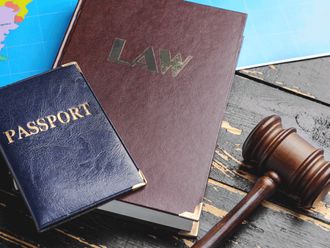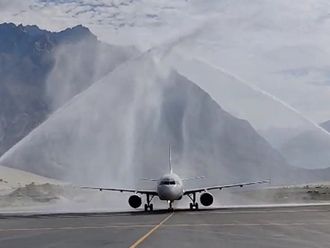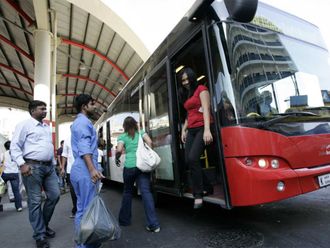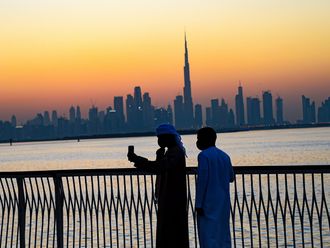The Gulf region may face earthquakes in the future even though the region is currently inactive, an expert warned on Monday.
“The Gulf region may be inactive seismically at present, but earthquakes can strike the region in future as the built-up strain energy is released,” said Dr. Loth Bounatiro, member of the Expert Committee for Monitoring the Seismic Simulator of Algeria.
Dr Bounatiro, also director of Research, Institute of Aerospace and Civil Engineering at the University of Saad Dahleb in Algeria, told the audience at a lecture organised by the Emirates Centre for Strategic Studies and Research, that four major tectonic plates — Arabia, Eurasia, India and Africa — and smaller tectonic blocks such as the Oman plate are converging, and the compression taking place is responsible for seismicity in the region and its immediate surrounding areas.
The massive earthquakes occurring not far from the UAE, in Iran, have often raised questions as to whether it is only a matter of time until the country suffers a similar event.
Stressing that there is no imminent threat to the UAE and other GCC member countries, Dr Bounatiro said seismic zoning maps, earthquake-resistant buildings should be among the precautionary measures to minimise future damage.
Dr Bounatiro said protection against major risks will require the use of space technology, and will use a new approach to the study of the earth in its broader environment. Through the detailed study of these phenomena it is possible to establish a relationship between seismic, climate and volcanic phenomena that can explain the nature of global seismicity, and more specifically that of the Maghreb and the Middle East.
“Ultimately this can lead to the development of a comprehensive disaster management scheme for major natural hazards that could minimise the human and material damage they cause around the world. This scenario has allowed us since 2003 to make predictions regarding seismic and climate changes and establish a pattern for use in risk management,” he said.
Dr Bounatiro said although earthquakes are hard to predict at present, it might be easier to do so in future.
“Earthquakes occur when two crustal plates on earth slide past each other causing a fault or fracture in the rocks the result which is sudden trembling of the earth surface. This tremor lasts only for a few seconds and could either be strongly felt or not felt at all,” he said, stressing that the frequency of earthquakes within the subducted Arabian plate is not high compared to similar events in some other subducted plates worldwide.
Citing the earthquake measuring 7.8 on the Richter scale that hit Iran on April 16, with tremors felt in the UAE, Oman, Pakistan and India, Dr Bounatiro said in southern Iran, seismic activity is dominated by the collisions of the Arabian and Indian plates with the Eurasian plate. The Arabian plate is converging toward the north-northeast at a rate of approximately 37 millimetres (1.443 inches) a year with respect to the Eurasian plate.
“The M7.8 rupture occurred as a result of normal faulting at an intermediate depth — about 82 kilometres — in the Arabian plate lithosphere (the uppermost region of the earth’s crust). The Arabian plate is subducting (pushing beneath) the Eurasian plate at the Makran coast of Pakistan and Iran south of that event.”
Dr Bounatiro said volcanoes, earthquakes, floods, drought, the ozone layer, desertification, the moon, the sun, magma, the atmosphere, plate tectonics, and cyclones are the main actors involved in a theatrical performance of nature that has continued since the dawn of time.
“The management of earthquakes requires an understanding of the mechanisms that govern the movement of tectonic plates. These movements are the result of a multitude of forces acting on our planet, some of which are external (such as astronomical, luni-solar forces and planetary perturbations), and some internal (geochemical and geophysical processes). Also of significance in this respect is the interaction of the Earth’s magnetic field with that of the sun,” he said.










